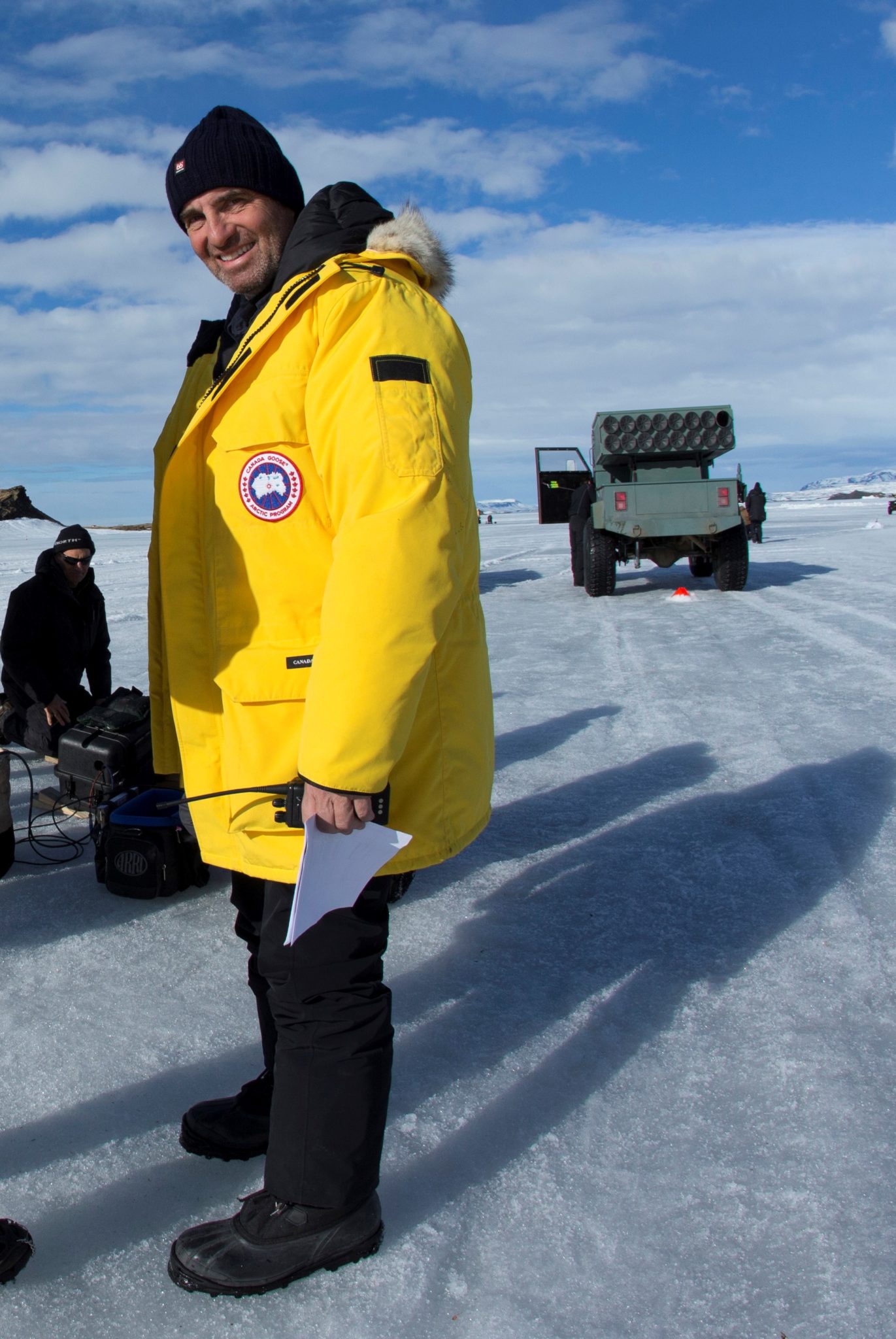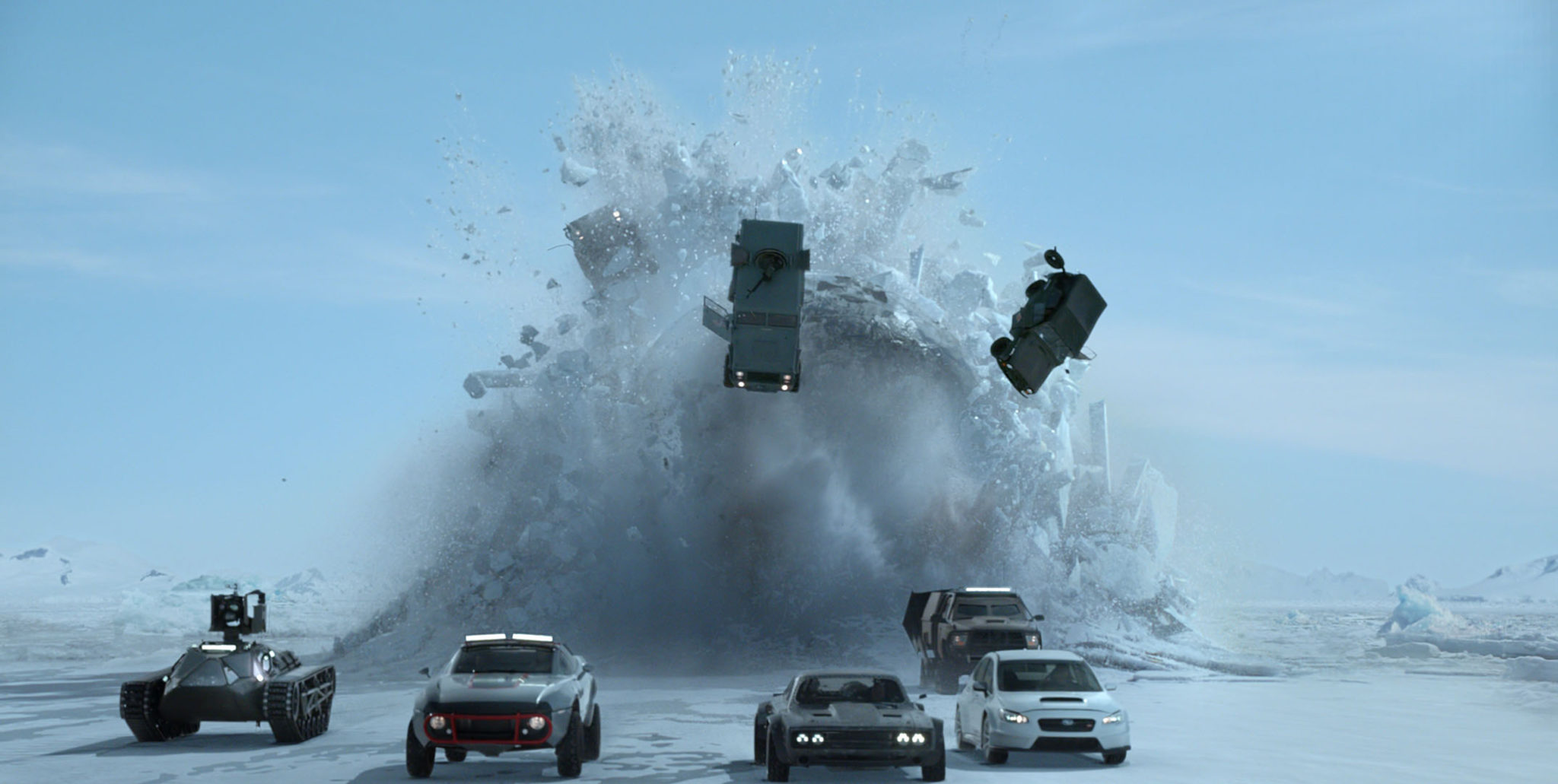
The industry veteran explains the challenges of designing and safely executing over-the-top action sequences in the franchise’s latest entry, particularly where the final death race on a sheet of ice was concerned.
You’ve seen Spiro Razatos’ work in a wide range of movies over the years, including several in theaters right now, and yet you may not be aware of who he is or that he did that work in the first place. Still, contributions to major feature films by Razatos and a hearty band of colleagues across the industry are central to the success of those films. Razatos is a well-respected stunt coordinator and second-unit director who has been designing and executing action sequences in major motion pictures for decades, including in the newest installment of the Furious franchise—The Fate of the Furious, directed by F. Gary Gray. It marks his fourth consecutive turn running second unit for the franchise, all in partnership with cinematographer Stephen Windon, ASC, who calls him “a genius.”
Razatos recently sat down with Studio to chat for the Podcasts from the Front Line series about the joys, perils, trials, and tribulations of being a second-unit director. In particular, this time around, he explained the complexities of executing the film’s culminating setpiece — a radical, multi-vehicle death race on a perilous sheet of ice that gets rudely interrupted by a nuclear submarine that suddenly bursts through the ice. Razatos proudly pointed out that only the submarine is synthetic. Shot on a lake in Iceland, the sequence, which features a Lamborghini, snowmobiles, armored vehicles, and more, was among the most audacious of his colorful career.
Audio-only version:
Subscribe: Apple Podcasts | RSS
“On this one, we used the [digital, high-speed] Phantom camera, which was really cool,” he says. “That was something we had not done before. I wanted to use it for the ice. I was thinking, we had these cool vehicles, the ice, fire, and explosions. What would be a great way to take that action to another level? So what happens with bullet time [a slow-motion effect the Phantom camera can produce] is we were able to go, instead of typical slow-motion, we went to 500fps, even 1,000 at times. So we could go 500 or 1,000 frames a second, to slow it down like crazy. But then, we went another step past that. We not only slowed it up, we took that shot and went from normal to slow or slow to normal, so that you had the chance to see it normal and slow in the same [sequence].
“For example, we had a vehicle that [the character played by Ludacris] was driving — a tank. The way it was spinning with snow underneath, and the treads and all that, the only way to see what that really [looks like] was to slow it up. But, at the same time, you have to go back to normal so that people can understand what is actually happening.”
Razatos says these kinds of challenges were about “selling speed” in an extreme and unusual environment during the kind of over-the-top sequence the franchise has become known for. To accomplish that, as with any other aspect of filmmaking, he says the design of such action sequences is simply about getting “more creative” from the starting point onward.
“You get to the frozen lake and look at it, and ask yourself how can you sell speed [in a place] that looks so vast and one-dimensional. So you start to add little snow mounds into the ice, and you start to break up the ice a little, so it is not perfectly clear ice, so that when the camera is low and going fast, it has a strobing effect to it. Everything we do, we layer it with things to make it better and faster.”
As if that wasn’t enough of a challenge, Razatos was responsible for the safety of his team while simultaneously pushing the adrenaline envelope. He discussed his industry’s need to emphasize safety while selling practical, realistic effects at the same time, and he also discussed some of the technological innovations in recent years, such as new cranes, heads, drones, and camera cars, among other things, that allow filmmakers like himself to really push the envelope.
Did you enjoy this article? Sign up to receive the StudioDaily Fix eletter containing the latest stories, including news, videos, interviews, reviews and more.










Leave a Reply